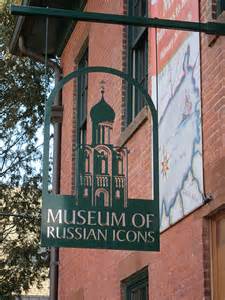Nov 9 2018 - Jan 27 2019
Clinton, MA
The Museum of Russian Icons is presenting an exhibition of over 150 Soviet-era ornaments. Mostly donated by collector Frank Sciacca, the decorations come from the former USSR and will be displayed alongside various sizes of “New Year’s Trees” along with toys, books, and cards that will transform the Museum’s West Gallery into a winter wonderland.
Following the Russian revolution in 1917, the anti-religion Bolsheviks discouraged Christmas and New Year celebrations in the Soviet Union, the gift giving and extravagance that accompanied the holidays came to symbolize the greed and excess of the bourgeois. The tradition of celebrating Novy God (New Year) re-appeared in 1935 as a secular holiday that would symbolize Soviet children’s prosperity and happiness. The New Year’s tree, or yolka, was repurposed as the central symbol of the celebration but with all religious references removed.
The Red Army’s ruby star replaced the star of Bethlehem on top, and the tree was decorated with non-religious shaped ornaments such as animals, plants, Kremlin architecture, airplanes, and the hammer and sickle. After the Soviets launched Sputnik 1 in 1957, figures of cosmonauts, rockets, satellites, and planets became popular. Ornaments that celebrated the country’s achievements in agriculture, like peppers, grapes, and carrots, were sold during Nikita Khrushchev’s time–the most popular being corncobs because of Khrushchev’s “corn campaign.”
The Russian fairytale figure, Ded Moroz (Grandfather Frost) was said to travel in a horse-drawn sleigh with his beautiful granddaughter, Snegurochka (Snow Maiden), to deliver gifts to children across Russia. In the early years of the Soviet regime, the Ded Moroz was an unacceptable link to old Russia. In later years he became the symbol of Novy God a move taken by the government as a way to stop the advance of the western tradition of Santa Claus. Ornaments and statues of Ded Moroz, sometimes with Snergurochka, became favorite decorations for New Year’s trees and family rooms during winter festivities.
Credit: Exhibition overview from museum website.
Exhibition Venues & Dates
Nov 9 2018 - Jan 27 2019
Clinton, MA
